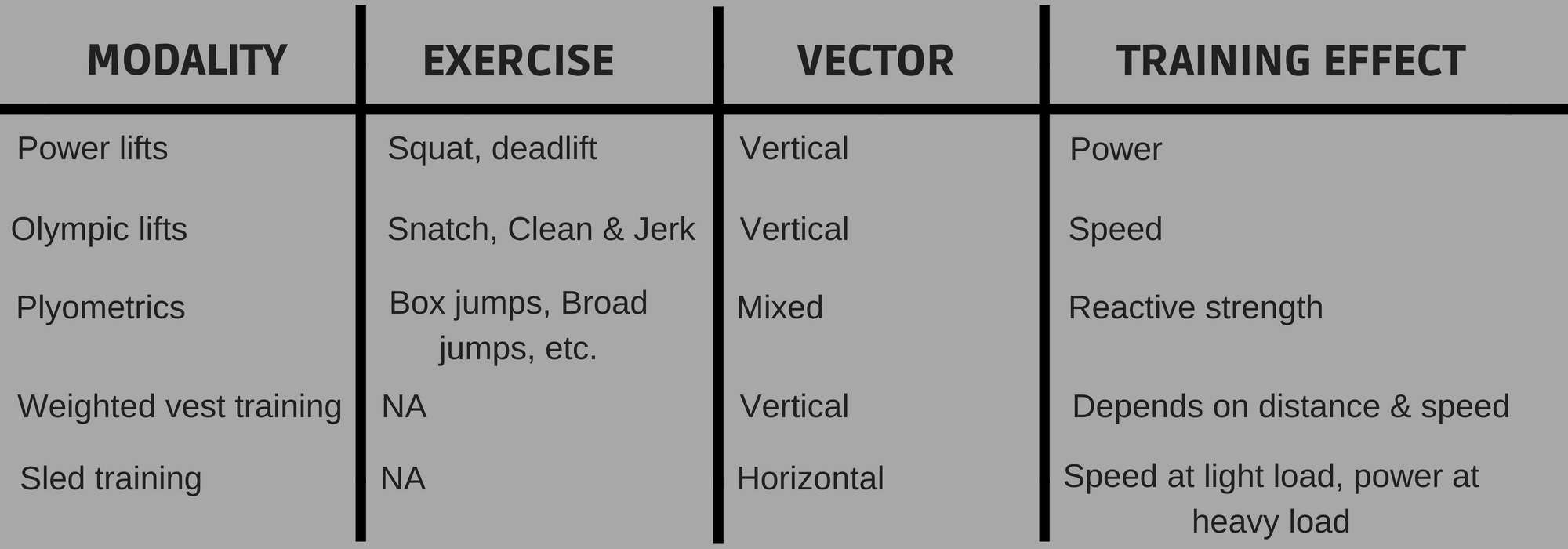Sled Sprint Training
BLUFF: Sled resistance at 10-20% of body weight improves max velocity and at 30-40% of body weight it improves acceleration.
There are few worthwhile sports that do not involve some form of sprinting. Our bodies were made to run and sprinting is a VERY effective form of exercise to challenge your body’s aerobic and anaerobic engines. And if you are a tactical athlete, no physical activity is going to keep you alive better than sprinting under load – presumably to move rapidly toward the enemy, not the other way around. Return with your shield, or on it….
I remember when I was first coming up in the community and decided to ignore running on most days because I thought that my job was to stand and fight – and win or die – there would be no running. But that was when I was ignorant of speed and power demands under metabolic load. Well, turns out sled training is probably one of the best ways to develop speed and power while inducing a metric shit ton of metabolic load in the process.
Most coaches focus on two different programming modalities to improve sprint performance. Programs are designed to increase an athlete’s force/power output, or improve the efficiency at which an athlete utilizes the body at a given physical output (sprint technique drills such as ankling, heel kicks, and high knee drills).
To increase force or power, several methods have a positive transference of training to sprint performance. These methods improve strength, power, and reactive strength. Power lifts (squats and deadlifts) enhance production of force, Olympic lifts enhance force velocity, and plyometrics (such as drop jumps) enhance reactive strength. However, it is important to note that these methods only focus the force generation in the vertical phase. The problem is that sprinting is primarily a horizontal movement as opposed to jumping.

A recent study reported a transfer of training between improvements in squat strength (vertical force production) and sprint performance. However, a greater transfer of resistance training to sport performance may be achieved if the conditioning program emphasizes a similar motor pattern and contraction type (i.e. comparable mechanical properties) to the performance movement.
Elite sprinters are able to produce greater horizontal force per unit body mass at any given velocity when compared to other groups and that appears to be due to a greater horizontal orientation of their “ground reactive force” (GRF). Additionally, non-elite sprinters produce equal, if not more, resultant force per unit body mass than elite sprinters. Therefore, resultant and vertical force production are not the key variables for differentiation of sprint acceleration ability.
Weight Vest training applies more of a vertical force and is quite different than sled training.
There are two key physical determinants of sprint performance: acceleration and maximum velocity (top speed). To improve sprint performance you need to advance your performance in each. Resisted sled sprint training (RSS) appears to be an effective tool for improving both sprint acceleration and maximal velocity (top speed). However, the volume and intensity to be applied in RSS training has yet to be adequately defined. We thank the authors of this review for doing a deep dive on the science currently available.
RSS training involves a set number of maximal straight-line sprint efforts towing a sled device. The sled is attached to the athlete by a chest or waist harness and cord. An external load, above that of unresisted sprint training (URS), is therefore a direct function of the sled mass and the amount of friction between the sled and the ground surface. My own summary of what RSS offers is that, for the horizontal performance in sprinting, heavy loads are the powerlifts and lighter loads are the Olympic lifts of horizontal ground reactive force. I think that’s kinda cool.
The authors of the study we are reviewing found 11 studies that utilized sled towing devices. Sled loads were described as a percent of body mass (%BM), a targeted reduction in velocity compared to unresisted sprint velocity, or as an absolute load.
Key Points:
1. RSS training improves performance at 10-40 % of BM. Lighter loads show no improvement over regular sprinting and are therefore worthless.
2. Combining RSS with plyometrics and unresisted sprint training is likely to give the highest performance gains.
3. Light loads (10-20% BM) improve maximum velocity, whereas heavy loads (20-40%) improve acceleration
But what about really heavy sled pulls and pushes? Is there some value there? Very likely for the tactical athlete. The need to push a broken down vehicle somewhere or evacuate a patient on a Skedco is a a legitimate need. There is a real concern that sprint kinematics associated with RSS training may result in a negative mechanical transfer from ‘heavy’ RSS training to sprint acceleration, however, so balance in your training is best. The old adage of “train slow, move slow – train fast, move fast” holds true here – just think of the amount of time Louis Simmons gives to dynamic (speed) days in his Conjugate Training Method. If the resistance is such that you cannot move your legs quickly over a full range of motion then your training will likely not result in significant improvements in performance.
Practical Application of Sled Training other than sprinting
The easiest method of calculating load is the %BM method mentioned already. But this method does not consider differences in strength, power, and or sprint velocity characteristics. An RSS load prescribed as n %Vdec (% decrease in your normal sprint velocity) considers these differences but is more difficult to calculate. Practical equations are available to calculate percentage reductions in velocity without the need for rigorous testing and should be used by coaches with elite athletes. For the nonprofessional athlete wanting to utilize RSS in his or her programming the % BM seems to be nearly as effective and is what I use.
As far as harness attachment and cord length go, a belt attachment will challenge hip extension more and a chest attachment will challenge knee extension more. You should train with both but focus on that area of your movement pattern that needs the most work. I have personally had problems with being more quad dominant in my squat – thus I need to work more with the belt attachment. However, this is based on studies from heavy sled walking and may have limited application for sprint training. As far the sled devices such as the prowler from Rogue and the FMI sled that require you to “push” the sled, well, they are mainly for that high load acceleration training. Not bad to use and certainly a metabolic load igniter but if you want to be complete you’ll need a chest or hip drag device as well.
The authors states that “Optimal training volumes in an overall training program are therefore a function of sled load, concurrent URS training and training experience. However, as a general recommendation based on current evidence, effective sled sprint training blocks will last for 6 weeks and include two to three sessions per week of 5–35 m sprints, totalling 60–340 m per session.”
Dr. Lanny Littlejohn is a special operations physician specializing in tactical performance and human performance in austere environments. You can find more from him at this website
Sources:
Resisted Sled Sprint Training to Improve Sprint Performance: A Systematic ReviewPetrakos G, Morin J, Egan B. Sports Med. 2016;46:381-400
Seitz LB, Reyes A, Tran TT, et al. Increases in lower-body strength transfer positively to sprint performance: a systematic review with meta-analysis. Sports Med. 2014;44(12):1693-702
Rabita G, Dorel S, Slawinski J, et al. Sprint mechanics in world-
class athletes: a new insight into the limits of human locomotion.
Scand J Med Sci Sports. 2015;. doi:10.1111/sms.12389.





